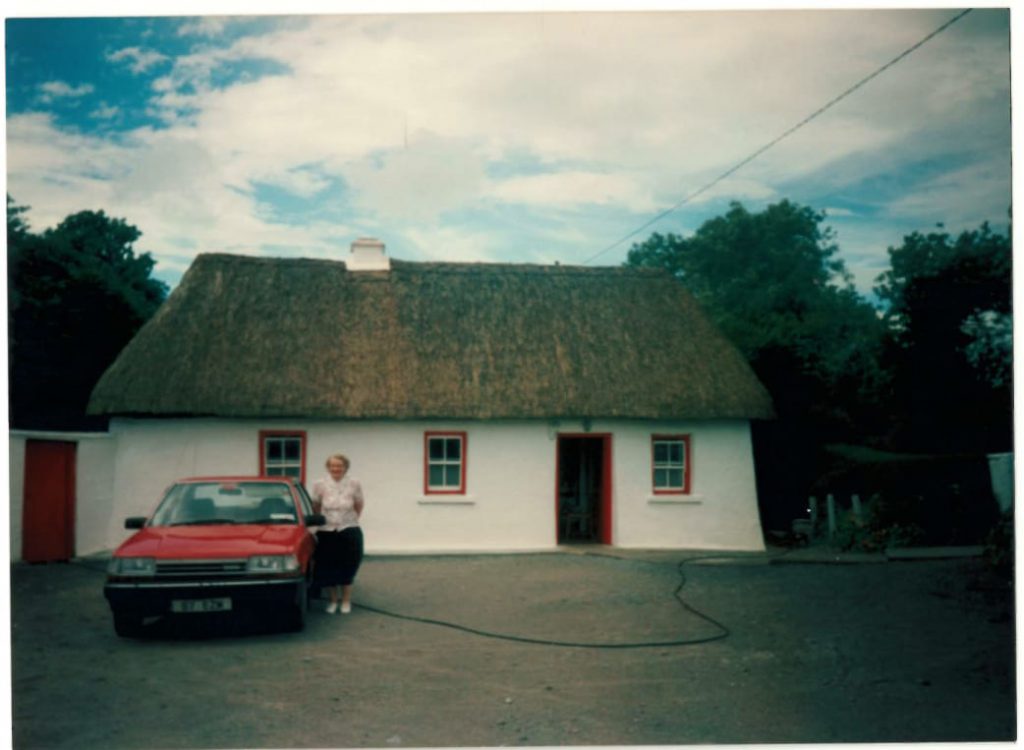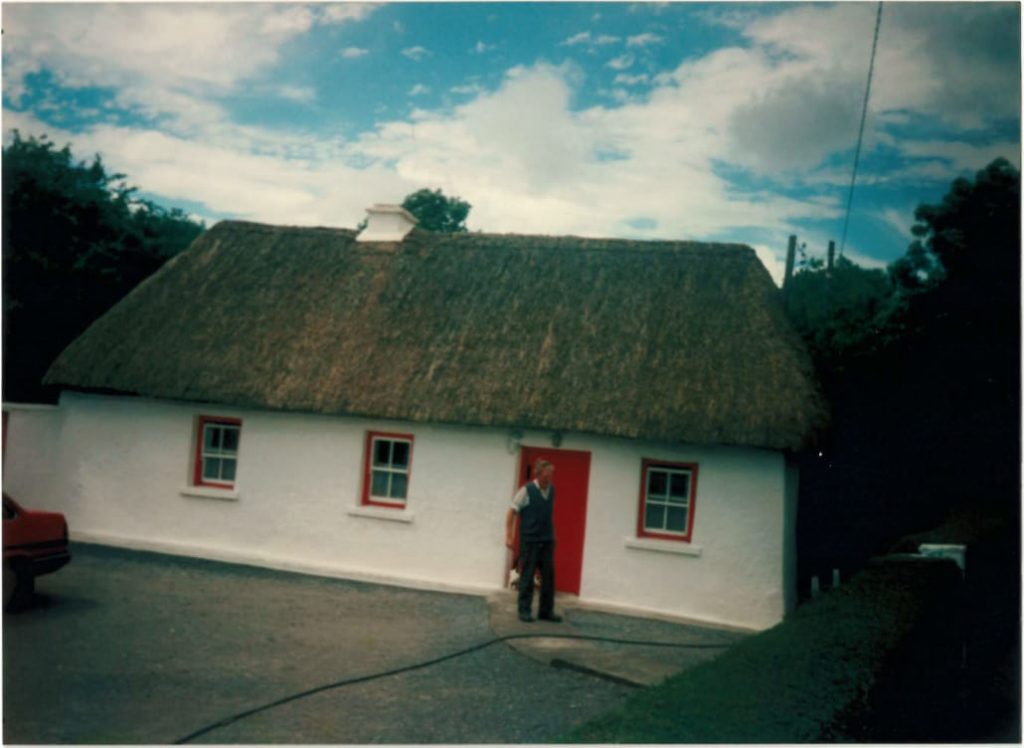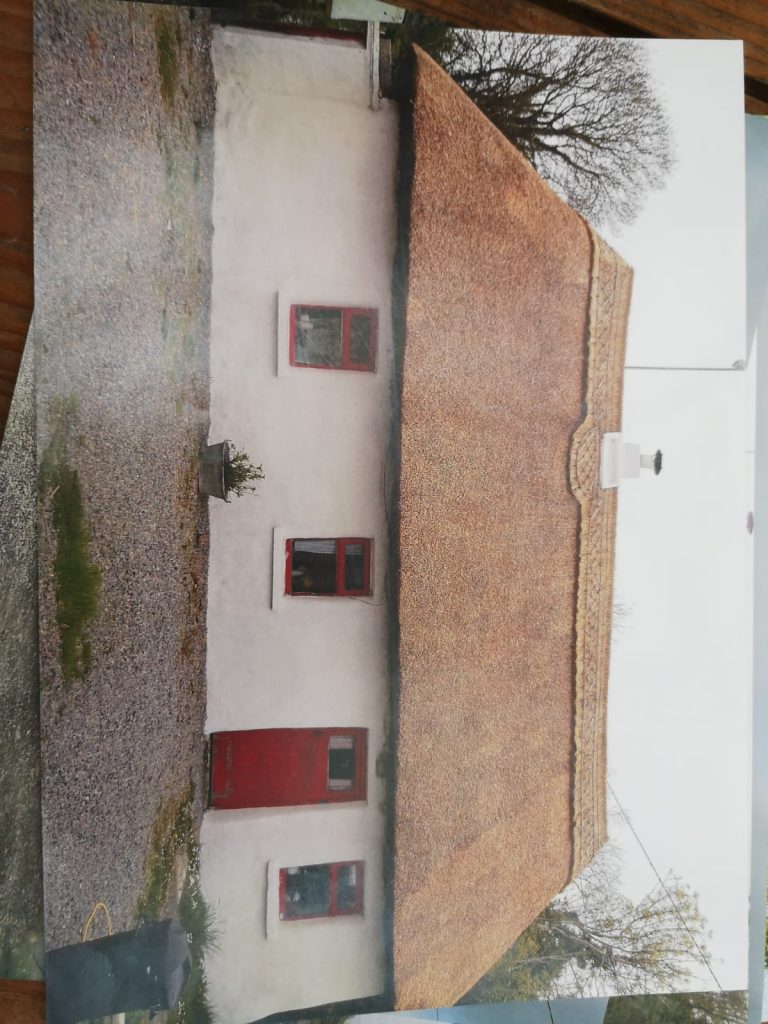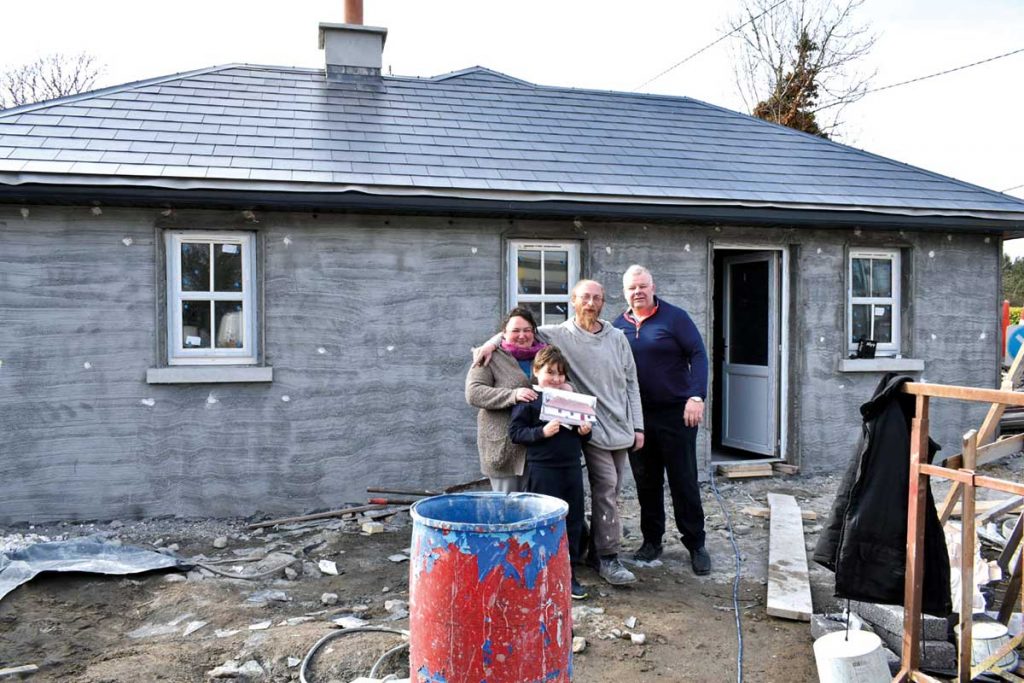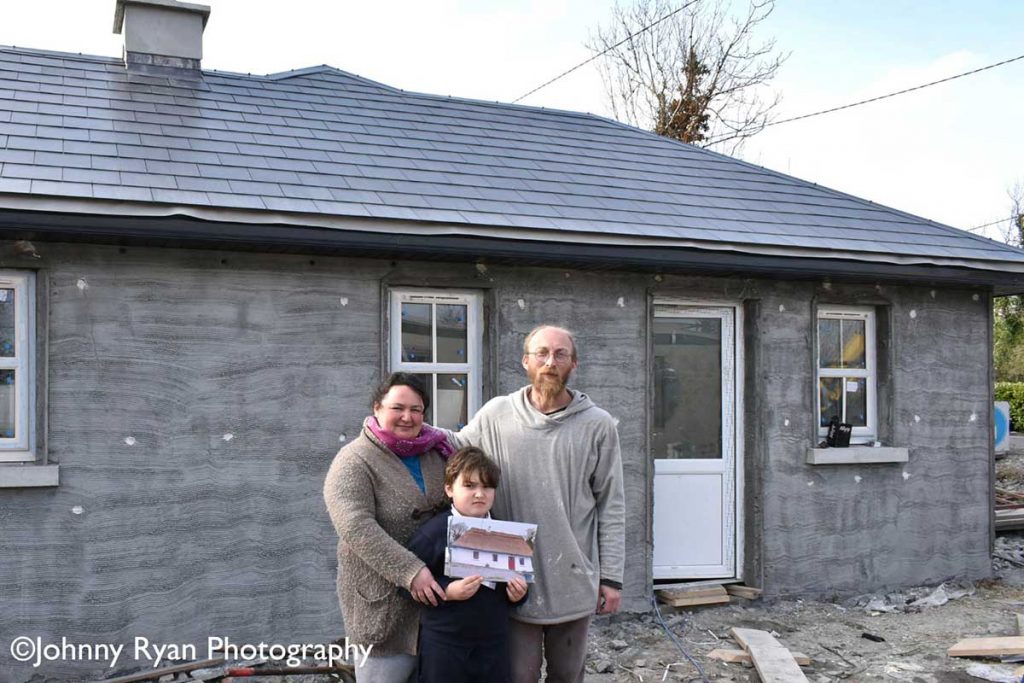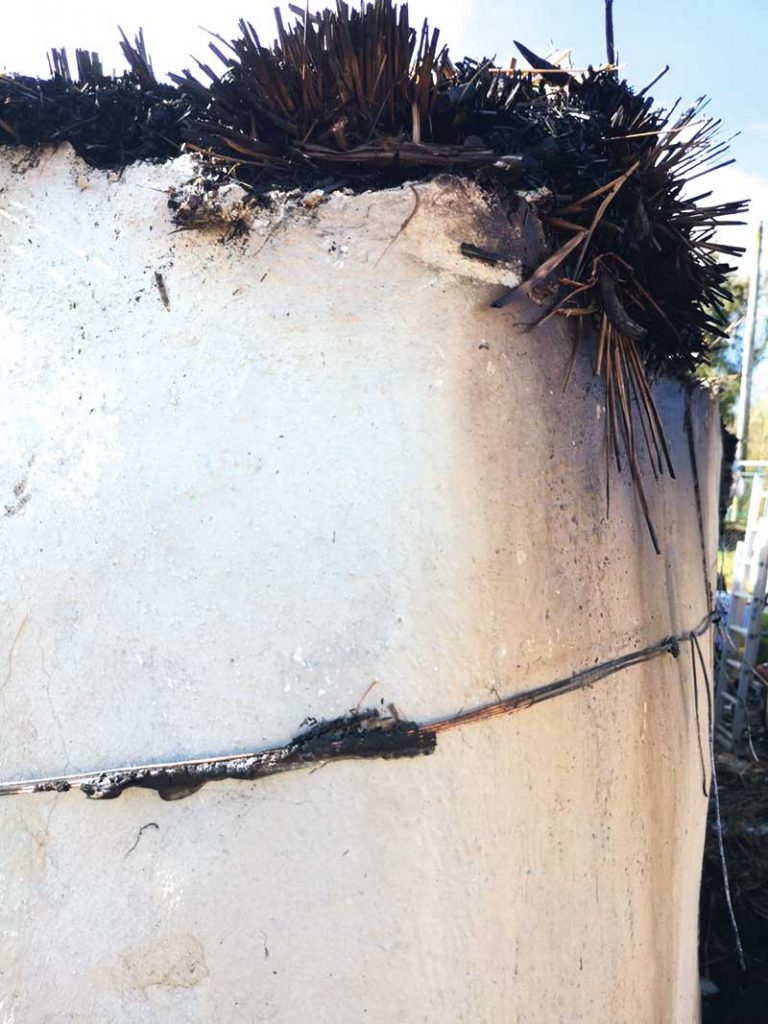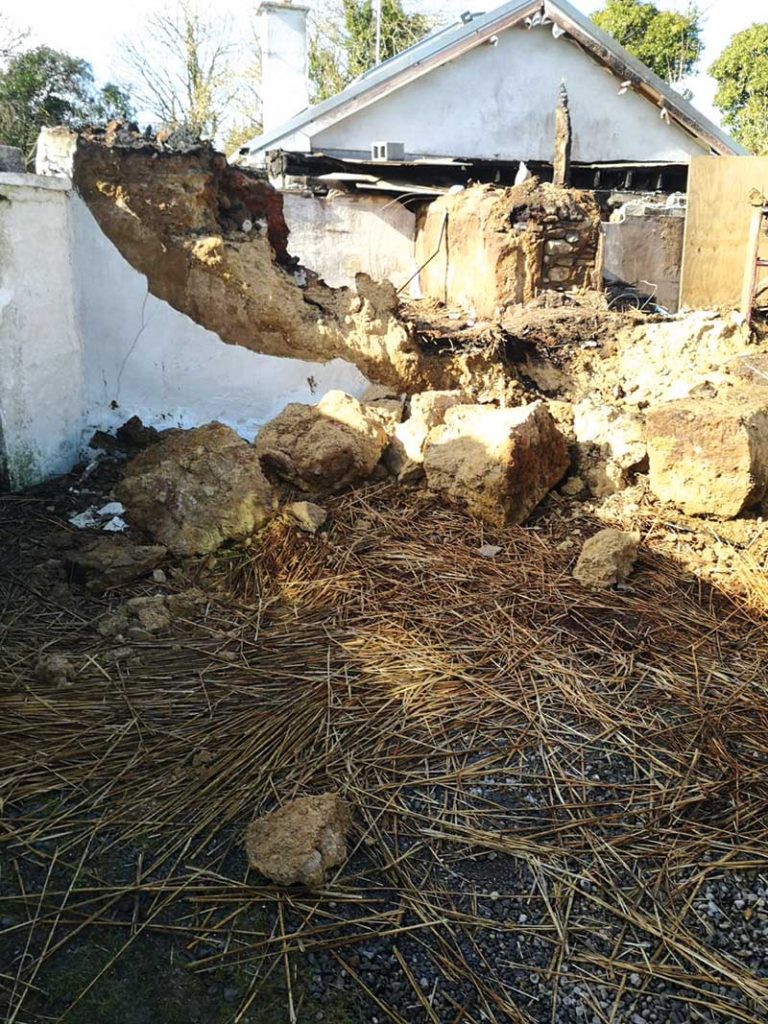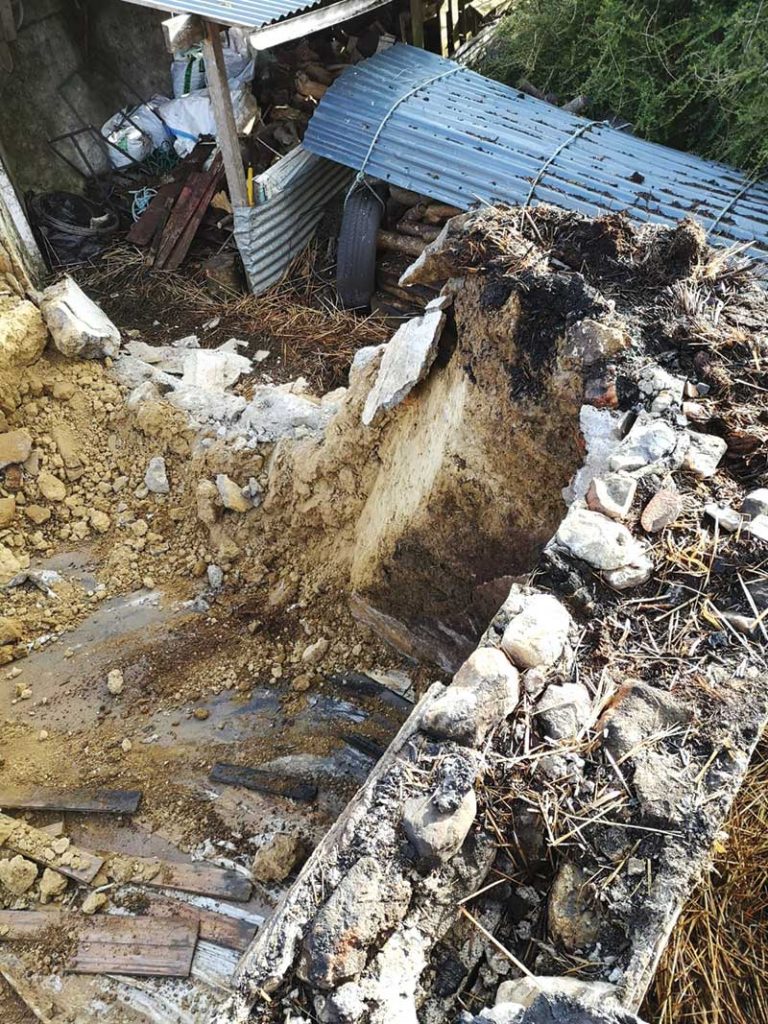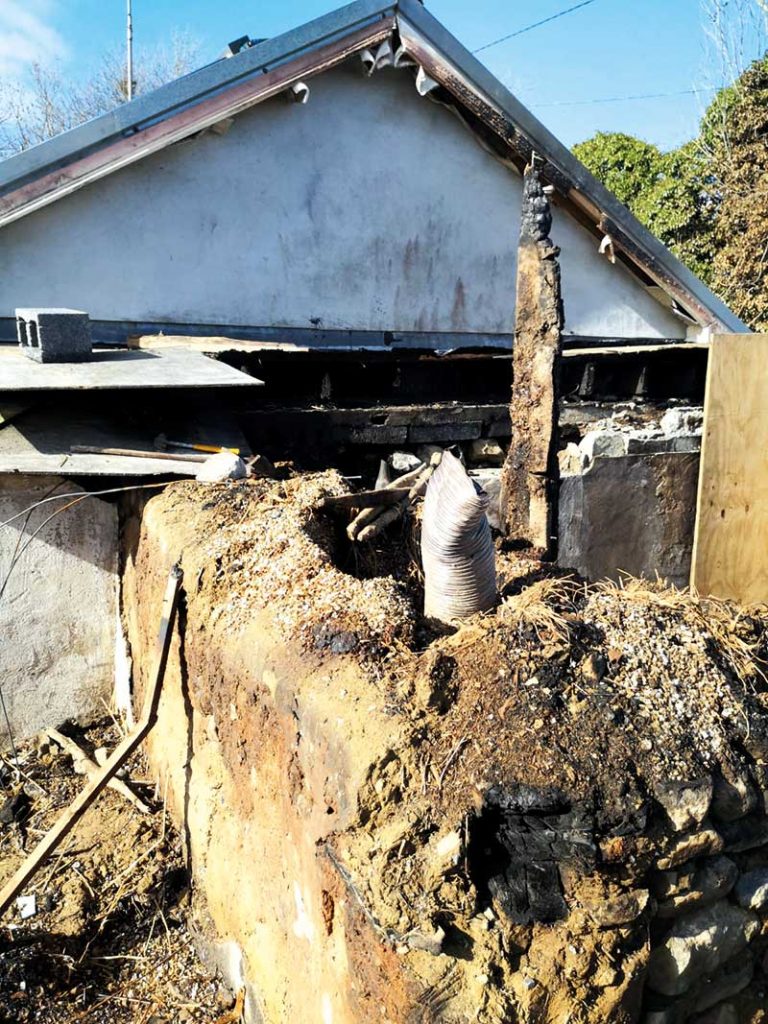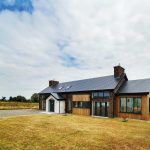The story of a community coming together to rebuild a family home following the same principles upon which houses were built in Ireland centuries ago – with the help of neighbours and local materials.
When Jeremy Zanni and partner Melanie moved to Ireland and stumbled upon a traditional Irish cottage, it was love at first sight. “It was a magical house,” says Jeremy, wistfully. “We bought it in 2004.” Since then the couple has taken great care of it; they replastered the entire walls in lime, removing a cement render, and had it rethatched four years ago.
As for the chimney they opted for a stove instead of open fires and so added a flue liner; the voids were backfilled with vermiculite. In March of this year, disaster struck and the couple lost their thatched cottage to two consecutive fires.
They had added an extension to the house which the firefighters thankfully managed to save.
The house needed updating. There was no insulation at all apart from a bit of fibreglass in the loft that my father had put in. I always remember it smelling musty, which isn’t surprising because the house is by the lake and surrounded by trees. There’s oak, beech and hazel; we also have a lot of ivy and holly.
[adrotate banner="57"]“The only explanation I have for the house burning down is that an ember somehow made its was up the flue and ricocheted off the flue cap onto the roof and buried itself deep into the thatch,” says Jeremy. “We’d been going through a very dry spell so not only was the thatch very dry, but so was the attic underneath.”
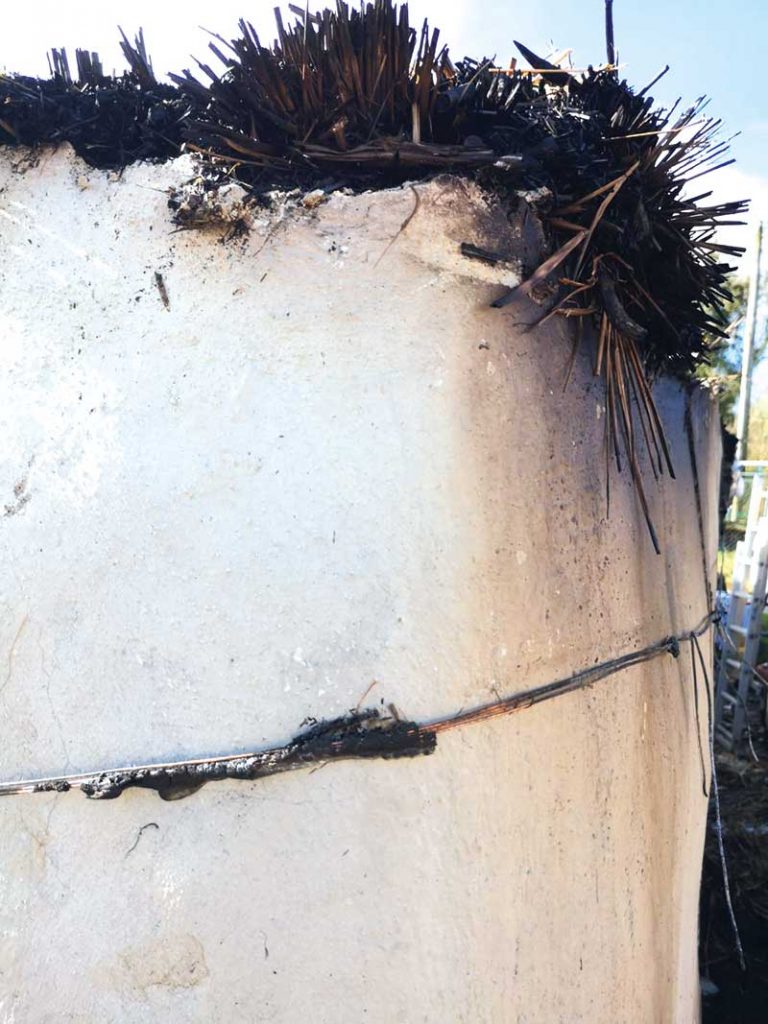
The fire happened in two stages; the first saw the firefighters filling the chimney with foam and covering the entire roof with the same fire retardant.
The next day the thatch still managed to catch on fire and the timber structure burned down, leaving just a central beam exposed and part of the wall structure. For the first fire the family was awake and the firefighters worked into the night; for the second the ember took its time to turn into a blaze.
“If it had happened two or three hours earlier, we would have been still fast asleep, we could have died, we were lucky,” says Jeremy. What the fire revealed was how the house was originally put together, and Jeremy documented as much as he could by taking photographs.
The way the chimney was constructed indicates it was at least 300 years old. “They had built the chimney structure a bit like a ladder with four wooden posts and noggins at regular intervals.
That structure was filled with cob (traditional mix of mud, horse hair and straw) and what looked like braided straw. There was some turf in there to fill in some of the gaps.”
The actual walls were mostly made of cob with some stone. Exposed, the adobe wouldn’t stand a chance against the rain but at this stage Jeremy was already thinking of how he could rebuild the cottage using traditional materials.
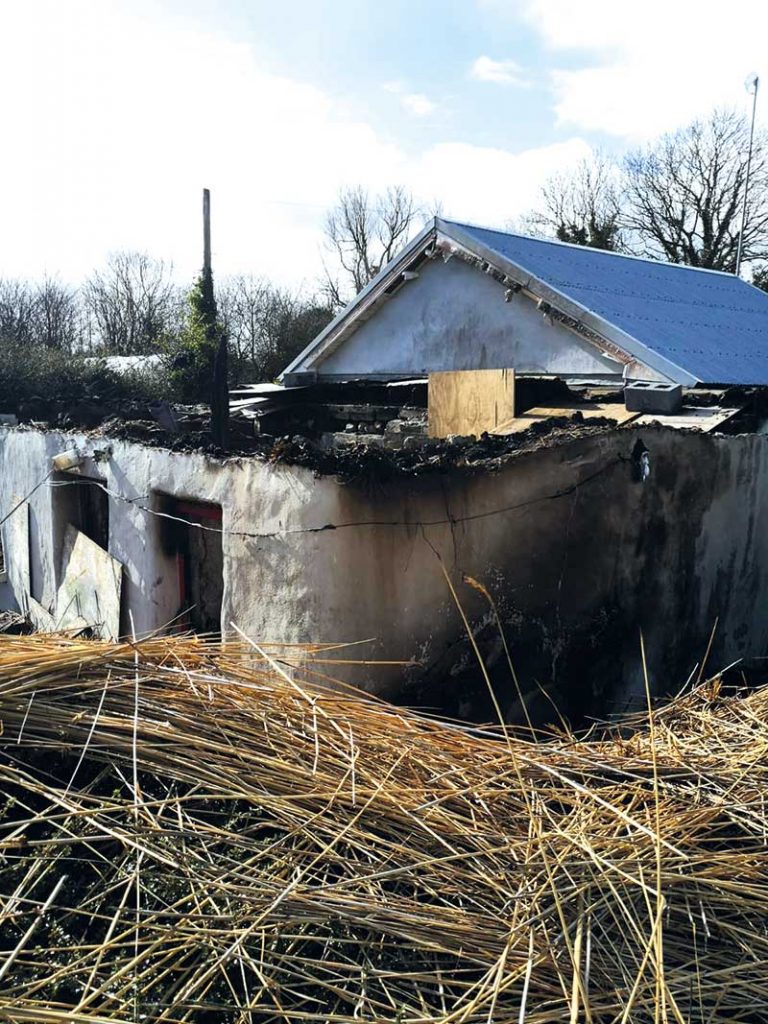
“It would have taken me five years but I would have done it,” he says. “I would have a thatched roof again although I’m not sure Melanie would have agreed.”
The couple hadn’t been able to insure the house due to the high premiums, so rebuilding from that stream wasn’t an option. “We insured the house for as long as we could; every year the premiums went up. In 2010 they were asking us for well over €2,000 and that’s when we had to stop.”
But as fate would have it, they lived down the road of local TD Michael Fitzmaurice who took the proverbial bull by the horns. “He told us we’d have a house in no time. At first I just thought it was a figure of speech, but he meant it,” says Jeremy.
Community re-build
“It only took four weeks to rebuild the entire house; he cracked the whip and had everyone organised to build a house to excellent standards. He asked me to take plenty of photographs of the construction to satisfy the engineer.”
First thing to go in the refurb was the big gas tank by the front door. We installed a log stove with a back boiler to heat the radiators, and back-up slim electric panels which are individually controlled by a remote app. To keep the air fresh and reduce heat escape we built in a heat recovery ventilation system.
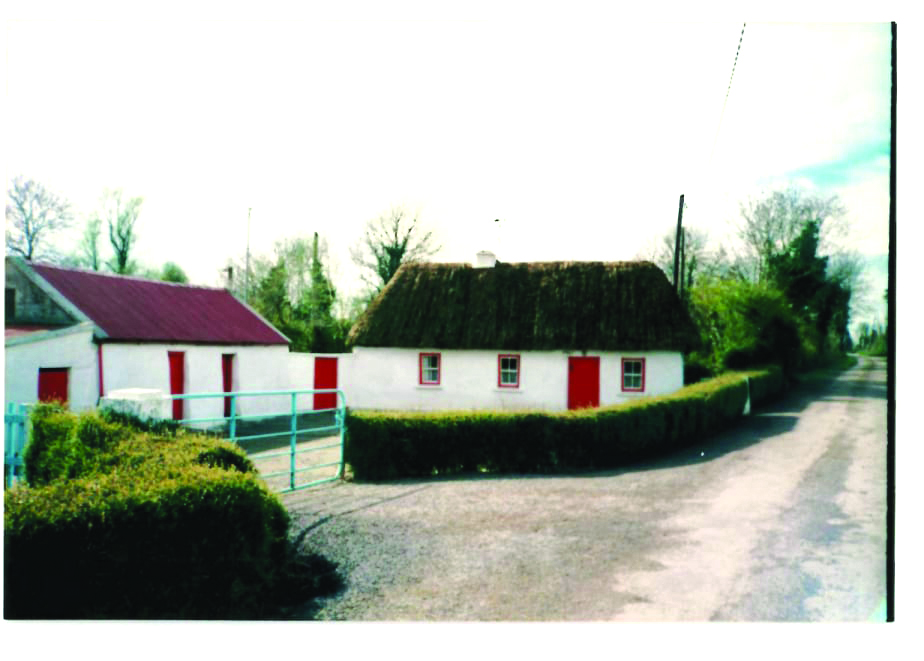
Michael acted as project manager, organising the tradesmen and materials to build a new foundation on the same footprint and a cavity wall structure pumped with EPS beads. Everyone working on site offered their services free of charge; there were at least two people from each trade helping out when they could. Six masons in total pitched in.
Builder’s merchants gave free materials, as did insulation and window suppliers. Jeremy and Melanie’s contribution on site was in many ways just as important, and that was to keep the kettle going. Others in the community, meanwhile, took it upon themselves to set up crowd funding campaigns.
With so much money pouring in, it covered the extra materials they needed to build the house. What’s left, Jeremy says, is being kept as a rainy day fund for the next time the community hits hard times.
And now, even though Jeremy is grieving the loss of his cottage, he’s hugely optimistic about the experience he’s lived through and for the future. They even found a good omen in the form of a donkey-shoe in the old cottage walls; it’s been put back in a similar position in the new house.
The couple also managed to salvage the central beam which they will be putting up above their new stove with the help of a carpenter friend of theirs.
This outpouring of goodwill has in fact spurred Jeremy on to get the word out – and the story did get national media coverage. A book and documentary are also in the works.

